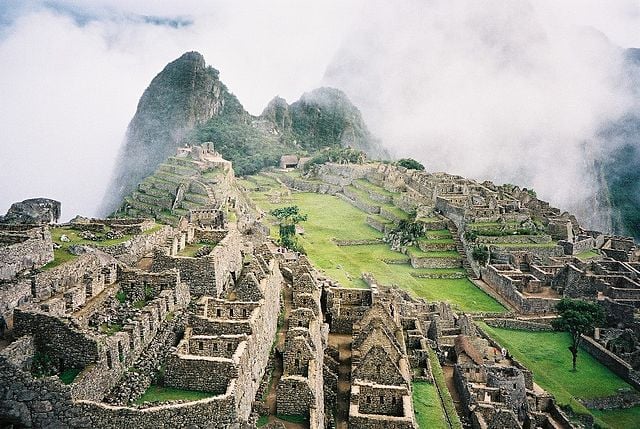*Image Credit: Wikimedia Commons High in the Andes mountains, the Inca thrived for hundreds of years before the arrival of the Europeans. On July 24, 1911, Yale history lecturer Hiram Bingham III laid eyes upon Machu Picchu, a forgotten city in the clouds. Almost a century later, the landmark received the honor of being named one of the New Seven Wonders of the World. Bingham had first become interested in the prospect of hidden Inca cities on his way home from a conference in Chile during the summer of 1908. During a stop in Peru, he visited Choquequirao, a city constructed by the Inca at approximately the same time as Machu Picchu. Intrigued by the possibility of discovering ancient ruins at such altitudes, Bingham resolved to return in search of larger ruins. Though historians believe Choquequirao to be one of the last strongholds for Incan warriors after the European arrival, it is little more than an administrative center and vantage point between the heavy forests of the Amazon and the city of Cusco. Bingham hoped for more and, with the help of Melchor Arteaga, got just that. Though locals and missionaries were aware of Machu Picchu’s existence, none had decided to bring attention to the magnificent structures spread across the site. Bingham, working as part of the Yale Peruvian Expedition and later with aid from the National Geographic Society, immediately began excavating the ruins – recovering and removing thousands of objects without Peruvian consent. At an altitude of more than 8,000 feet, Machu Picchu sits atop cliffs stretching nearly 1,500 feet above the Urubamba River. Secluded in the lush Amazon rain forest, approximately a third of the site has been uncovered in the century since Bingham and his teams arrived. Scholars have been amazed by the intricacy of the structures on site, with some believing it to be a strictly religious location and others maintaining it served as an estate for the leader of the Inca Empire at the time, Pachacuti. What cannot be argued about the “Lost City of the Inca,” as Bingham named it for his 1948 book, is that it is vast. Cut into the mountainside, Machu Picchu might have been an impregnable fortress if the Inca had not decided to abandon it. Protected by a steep mountain to the rear and sheer cliffs on three sides, the city is supplied with enough water for thousands of people – some estimates say as many as four times Machu Picchu’s population at its height. Divided into farming and living sections, it is a masterpiece of urban planning. The agricultural terraces fill the lower areas, serving both as an important source of food and crucial obstacle for invaders. Moving up into the city proper, one would find the dry stone walls a perfect example of the ancient ashlar building technique – a construction method by which blocks were cut to fit tightly without the need for mortar (an innovation which helped them survive earthquakes). Though the reasons behind the Inca abandonment are unknown, disease is often theorized as the primary cause. Believing the European influx of smallpox to be too much for the tribe to bear, it seems likely the diminishing numbers of natives were unable to maintain the vast site. According to the best estimates, the Inca left Machu Picchu in the 1570s, hardly more than a century after the site was completed.
July 24, 1911 CE – Machu Picchu is Found Again
*Image Credit: Wikimedia Commons High in the Andes mountains, the Inca thrived for hundreds of years before the arrival of the Europeans. On July 24, 1911, Yale history lecturer Hiram…
543
